Contents
- Introduction to Low Rise Jeans
- Introduction to High Rise Jeans
- The History of Jean Styles
- Comparing Fit and Comfort: Low Rise and High Rise Jeans
- Fashion Trends: When to Wear Each Style
- The Best Body Types for Low Rise and High Rise Jeans
- How to Style Low Rise Jeans
- How to Style High Rise Jeans
- Pros and Cons of Low Rise vs High Rise Jeans
Introduction to Low Rise Jeans
Low rise jeans sit below the natural waistline, resting several inches lower—typically just above the hips. This style became iconic during the late 1990s and early 2000s, characterized by a shorter zipper and a waistband that sits lower than traditional cuts. When comparing low rise vs high rise jeans, the distinction lies in waist placement: while low rise styles emphasize a relaxed, casual vibe, high rise jeans hug the natural waist or rise above it for a sleek, elongating silhouette.
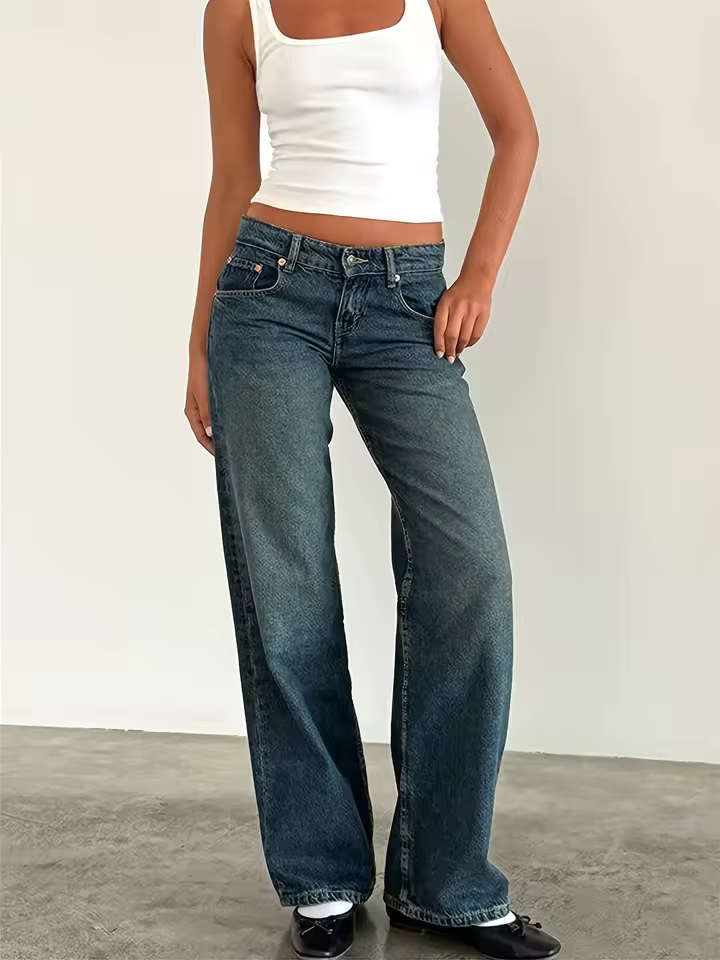
Low rise jeans can offer a casual, laid-back look. They often appeal to younger generations seeking a more relaxed style. They’re ideal for showing off a flat stomach and can easily be paired with cropped tops. However, they require confidence to wear, as they draw attention to the waist and hip area.
Within the ‘low rise vs high rise jeans’ debate, this style is known for being a bit daring. It’s a choice for those who are comfortable with lower waistbands and a more revealing fit. While fashion trends shift, low rise jeans remain a staple for certain looks and seasons, particularly during warmer weather when a breezy, carefree style is in vogue.
Introduction to High Rise Jeans
High rise jeans sit above the natural waistline. They cover the belly button area or even higher. This style came into prominence in the 1970s and made a significant return in fashion over the past decade. Essential elements of high rise jeans include a longer zipper and a waistband that comes up to or over the navel.
High rise jeans create a sleek, streamlined silhouette. They are often favored by those who wish to define their waistline. These jeans support a variety of body shapes, making them versatile for different fashion needs. This style enhances figures by elongating the legs and accentuating the natural waist.
In the ‘low rise vs high rise jeans’ discussion, high rise jeans represent a more conservative and classic fashion choice. They offer extra coverage and can tuck in the tummy, which boosts confidence for many wearers. Fashion-forward individuals appreciate them for their ability to pair well with different types of tops, including tucked-in blouses and bodysuits. As seasonal styles emerge, high rise jeans remain a go-to for those seeking comfort without sacrificing elegance.
The History of Jean Styles
The evolution of jean styles mirrors cultural shifts and fashion trends. Jeans, originally designed for work, have transformed into a fashion staple. Their rise began as durable clothing for miners in the 1800s. By the mid-1900s, jeans had become symbols of rebellion among youth. This image grew with the popularity of the silver screen and icons like James Dean.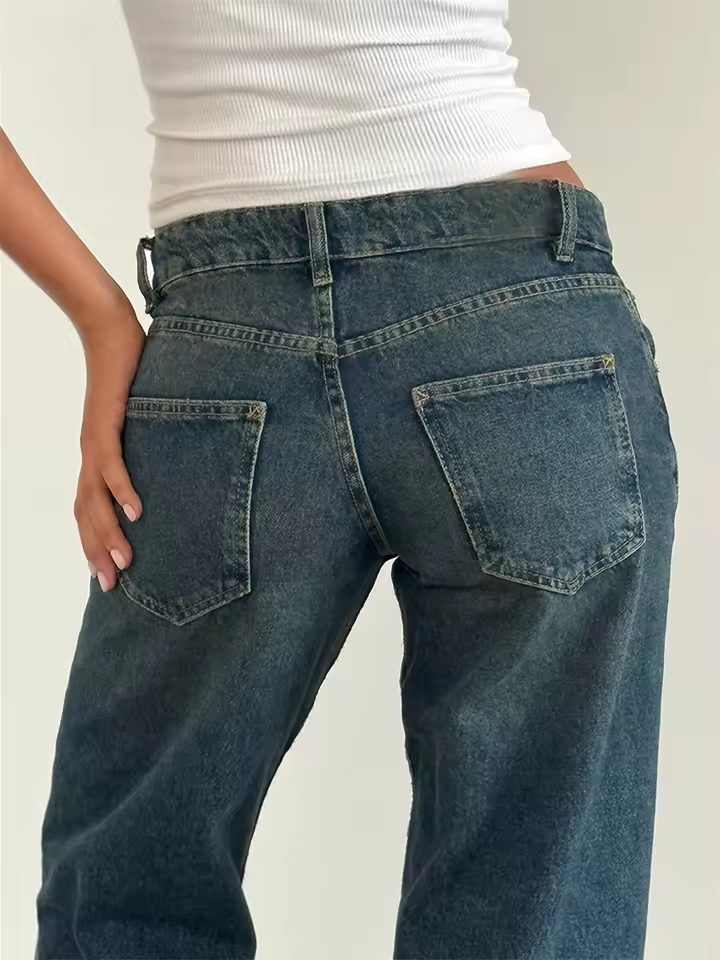
In the 1960s and 1970s, high rise jeans gained momentum. They matched the era’s call for freedom and self-expression. Low rise jeans emerged in the late 1990s, reflecting a bold and edgy youth culture. They became a defining style for the era. Today, both low rise and high rise jeans continue to cycle in and out of fashion.
High rise jeans have reclaimed popularity in recent years. They align with a growing interest in retro styles and body positivity. Low rise jeans are also making a comeback, riding the wave of Y2K fashion revival. Throughout the decades, jean styles have evolved to fit the changing tastes and lifestyles of the wearer.
Comparing Fit and Comfort: Low Rise and High Rise Jeans
Choosing between low rise and high rise jeans often comes down to personal comfort and fit. Let’s explore how each style serves different comfort needs.
For those who prefer a snug fit that cinches at the waist, high rise jeans are ideal. They sit firmly over the hips and stomach, providing a sense of security and shape. This style particularly suits people who enjoy a structured fit.
On the other hand, low rise jeans suit those who favor freedom around the midsection. This style allows for ease of movement and can feel less constricting than high rise options. Because they sit lower, they avoid squeezing the stomach area, which can be a comfort feature for some.
When it comes to comfort, high rise jeans can offer support and tummy control, which many find flattering. They’re also less likely to slide down when you bend over or move, reducing the need for adjustments. In contrast, low rise jeans may require more frequent pulling up if they do not fit well.
Beyond personal comfort, the issue of low rise vs high rise jeans includes the climate factor. High rise jeans might be too warm for hot weather, while low rise jeans allow more air to circulate around the waist and hips.
Ultimately, whether you pick low rise or high rise jeans, ensure they fit well. Properly fitted jeans, regardless of style, will be the most comfortable and look the best. Remember to consider your body type, which we’ll discuss further in the blog, when choosing the fit that’s right for you.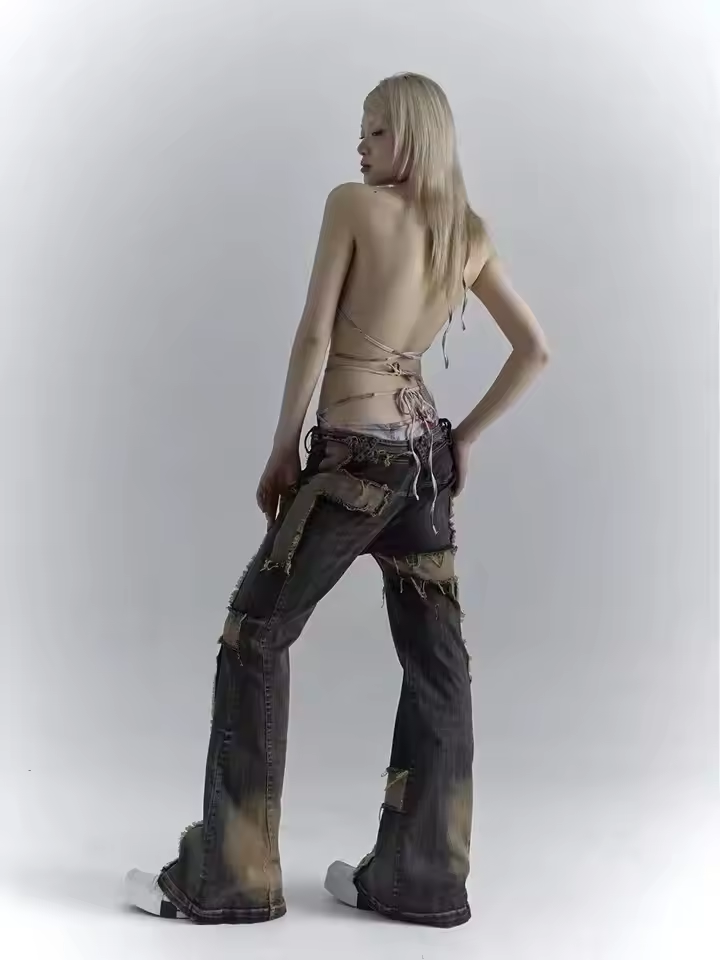
Fashion Trends: When to Wear Each Style
In the fashion realm, timing is everything. Knowing when to wear low rise vs high rise jeans can enhance your style quotient. Let’s dive into the trends that dictate the perfect occasions for each jean style.
For Low Rise Jeans:
- Casual Outings: They shine in laid-back settings. Think beach walks or relaxed hangouts.
- Clubs and Parties: The edgy vibe of low rise jeans fits well with the energetic atmosphere of nightlife.
- Warm Weather: They’re ideal for summer days, allowing better air flow around the waist.
For High Rise Jeans:
- Professional Environments: They offer a polished look suitable for the office or business casual events.
- Cooler Seasons: High waists are comfortable when layers are needed to stay warm.
- Formal Occasions: They can be dressed up for a sophisticated appearance at gatherings or dinners.
Both low rise and high rise jeans can slot into various fashion trends, responding to the seasonal shifts and changing tastes. Balance is key. Pair them with the right tops and accessories based on the event. Whether you lean into the daring allure of low rise jeans or the elegant comfort of high rise styles, always let the occasion guide your choice.
The Best Body Types for Low Rise and High Rise Jeans
When discussing low rise vs high rise jeans, it’s essential to consider body types. Here’s a brief guide:
For Low Rise Jeans:
- Petite Figures: The lower waistband can create the illusion of a longer torso.
- Athletic Builds: Low rise jeans can showcase a flat stomach and toned hips.
- Slender Waistlines: They’re great for those with a smaller midsection who want to accentuate their shape.
For High Rise Jeans:
- Hourglass Figures: The high waistband highlights the waist and balances proportions.
- Apple Shapes: These jeans offer tummy control which can create a smoother silhouette.
- Tall Individuals: High waisted styles can help proportion the body and elongate the legs.
Determining the best fit involves trial and error. Experiment with different jeans to find your ideal match. Remember, comfort and confidence are key when choosing between low rise and high rise jeans. Knowing which style flatters your body can make all the difference in how you look and feel.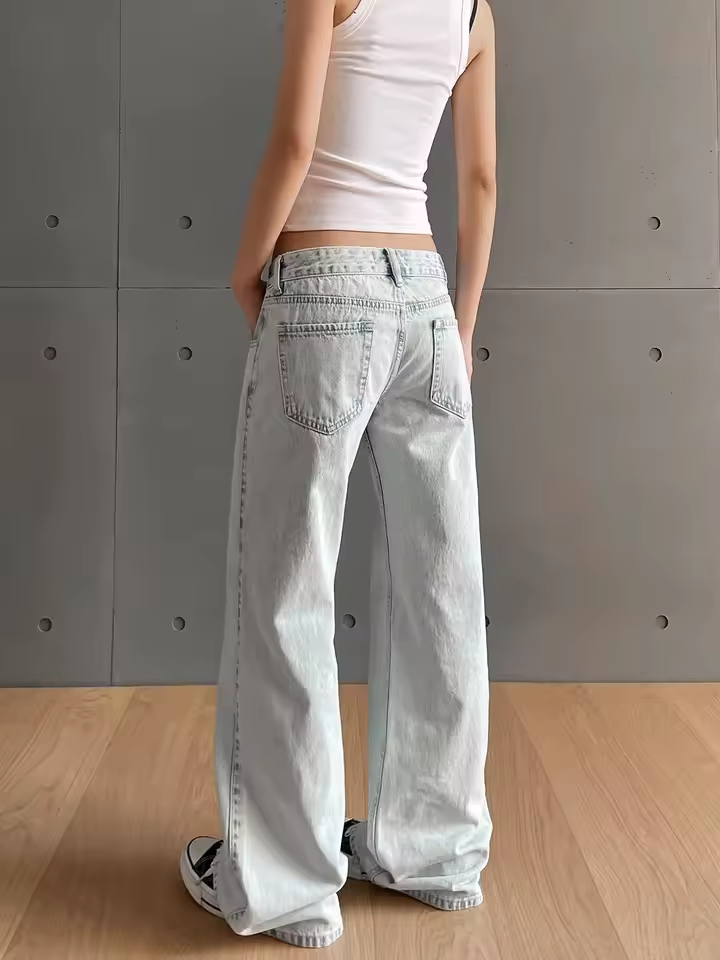
How to Style Low Rise Jeans
When styling low rise jeans, consider these tips:
- Pick the Right Top: Avoid long, baggy tops. Opt for fitted shirts or cropped styles to maintain a balanced look. It’s all about proportion.
- Belt Them Up: A stylish belt can add flair and ensure a good fit. It stops jeans from sliding down.
- Layer with Confidence: Try a camisole with an open cardigan or jacket. This gives a laid-back yet intentional style.
- Go for a Boho Vibe: Pair with a flowing blouse to nail a bohemian look. Add sandals or wedges for extra effect.
- Choose Footwear Wisely: Sneakers for a casual day, heels for a night out. Shoes can change the vibe.
- Mind Your Underwear: Low rise jeans reveal more when sitting. Select appropriate undergarments for coverage.
In the ‘low rise vs high rise jeans’ discussion, low rise jeans have their unique appeal. They are perfect for relaxed settings and when you want to showcase bold fashion choices. Always wear them with poise and the right complementary pieces for the best effect.
How to Style High Rise Jeans
Styling high rise jeans can be fun and fashionable. Follow these tips to create stylish outfits:
- Tuck In Your Tops: High rise jeans work well with tops tucked in. This highlights the waist and presents a neat profile.
- Play with Proportions: Try cropped or regular length tops. Long tops can work if you belt them at the waist.
- Belt for Style and Function: A belt can accentuate the high waist and add a stylish element.
- Layer Smartly: Jackets and blazers should hit at or above the hip to keep the figure elongated.
- Choose High-Rise for High Heels: These jeans are great with heels as they make legs look even longer.
- Experiment with Footwear: Apart from heels, boots and flats also pair well with high rise jeans.
- Keep it Simple: Since high rise jeans make a statement, keep accessories minimal for balance.
When you’re part of the ‘low rise vs high rise jeans’ discussion, remember that high rise jeans offer versatility and elegance. They adapt to various styles and occasions, making them a favorite in many wardrobes. With the right fit, high rise jeans can make anyone look polished and put-together.
Pros and Cons of Low Rise vs High Rise Jeans
When weighing up low rise vs high rise jeans, it’s crucial to understand the advantages and drawbacks of each. This comparison can help you make an informed decision that suits your style, comfort, and body type. Here are the key pros and cons to consider.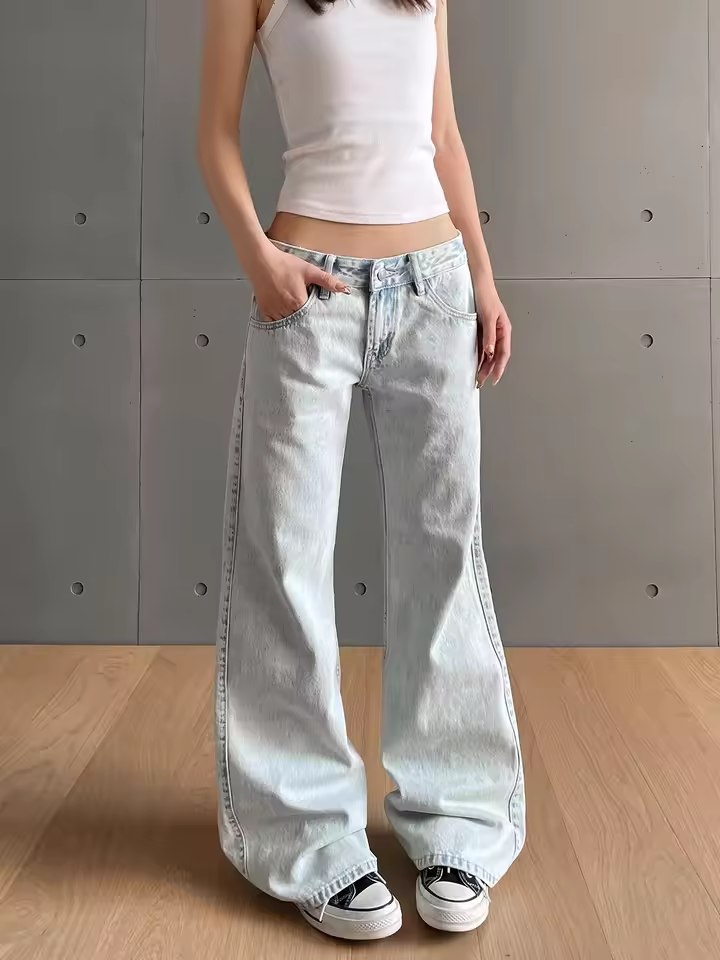
Pros of Low Rise Jeans:
- Enhance Casual Style: They offer a relaxed, youthful look perfect for informal settings.
- Show Off Your Figure: Ideal for flaunting a toned waist or flat abs.
- Comfort in Heat: More breathable around the hips and waist, great for hot days.
- Variety of Styles: Available in many cuts, from skinny to wide-leg options.
Cons of Low Rise Jeans:
- Limited Coverage: May reveal more than desired when bending over or sitting down.
- Frequent Adjusting: Tend to slide down, requiring more often pulling up.
- Selective Fit: Not as flattering for those who prefer not to focus on the midsection.
Pros of High Rise Jeans:
- Tummy Control: Offer a smoothing effect on the stomach, enhancing comfort and confidence.
- Versatile Styling: Easy to dress up or down, suitable for various occasions.
- Elongate Legs: Create an illusion of longer legs, suitable for shorter individuals.
- Stay in Place: More likely to stay put without sliding, minimizing adjustments.
Cons of High Rise Jeans:
- Can Feel Restrictive: Some may find the fit too tight around the waist and stomach.
- Warmth Factor: Can be too warm in hot climates, less airflow than low rise jeans.
- Style Limitations: May not pair as well with certain casual or cropped tops.
Each jean style presents its benefits and challenges. Personal preference, occasion, and body shape should guide your choice between low rise and high rise jeans. Balance style with practicality to decide which works best for you.